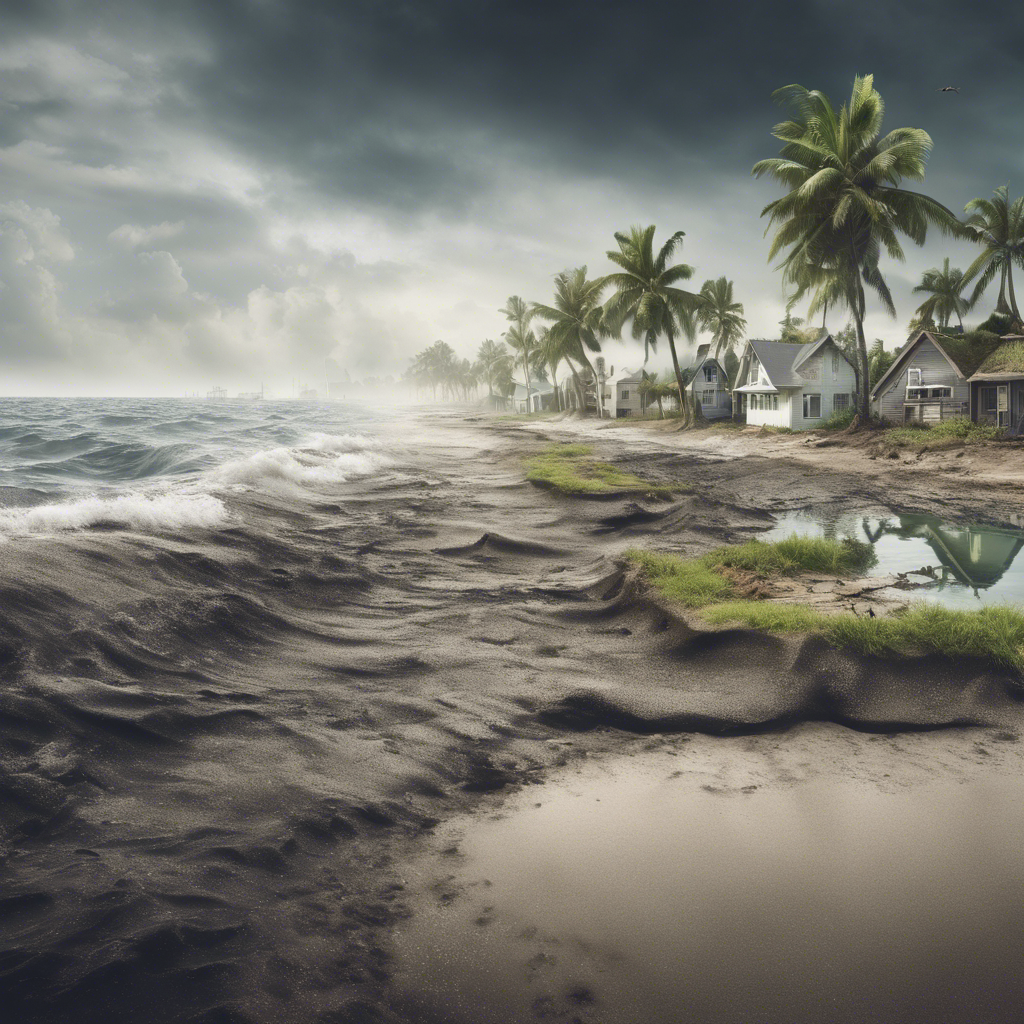Small Island States Face an Uncertain Future as Sea Levels Continue to Rise
As the global climate crisis intensifies, one of the most pressing concerns is the rising sea levels and its impact on coastal communities. While many regions around the world are grappling with the consequences of climate change, small island states are particularly vulnerable. These nations, often characterized by their unique cultures and pristine natural environments, face an uncertain future as their very existence is threatened by the encroaching waters. This article explores the challenges faced by small island states in the face of rising sea levels and highlights the urgent need for action to mitigate the devastating consequences.
1: The Threat to Coastal Communities
The effects of rising sea levels are already being felt in coastal communities around the world. Small island states, such as the Maldives, Seychelles, and Tuvalu, are at the forefront of this crisis. These nations, with their low-lying landmasses, are particularly susceptible to the impacts of climate change. As sea levels rise, these communities face increased risks of flooding, erosion, and saltwater intrusion into freshwater sources. The livelihoods of millions of people who depend on fishing and tourism are under threat, as their homes and infrastructure are slowly swallowed by the sea.
2: Loss of Biodiversity and Ecosystems
The rising sea levels not only pose a threat to human communities but also to the unique biodiversity and ecosystems found in small island states. Coral reefs, mangroves, and coastal wetlands, which are vital for maintaining the health of marine ecosystems and protecting against storm surges, are being degraded and destroyed. This loss of biodiversity not only disrupts fragile ecosystems but also impacts the livelihoods of local communities who rely on these resources for sustenance and economic activities.
3: Climate Refugees and Displacement
As the sea encroaches further inland, small island states are faced with the grim reality of climate refugees and forced displacement. With limited land area and resources, these nations struggle to accommodate their own populations, let alone those displaced by rising sea levels. The potential for social unrest and conflicts over scarce resources looms large, as communities are uprooted from their ancestral lands and forced to seek refuge elsewhere. The international community must grapple with the ethical and logistical challenges of providing assistance and support to those displaced by climate change.
4: International Response and Adaptation Strategies
Recognizing the urgency of the situation, international efforts have been made to address the impacts of rising sea levels on small island states. The Paris Agreement, signed by nearly all countries in 2015, aims to limit global warming to well below 2 degrees Celsius above pre-industrial levels and to pursue efforts to limit the temperature increase to 1.5 degrees Celsius. Additionally, adaptation strategies such as the construction of sea walls, reforestation, and the promotion of renewable energy sources are being implemented in some small island states. However, these efforts are often hindered by limited financial resources and the lack of political will.
5: The Need for Global Solidarity and Action
The plight of small island states in the face of rising sea levels is a stark reminder of the interconnectedness of our planet and the urgent need for global solidarity and action. The responsibility to address climate change falls on all nations, as the consequences of inaction will be felt by everyone. Developed countries have a moral obligation to support small island states in their efforts to adapt and mitigate the impacts of climate change. This includes providing financial resources, technology transfer, and capacity-building support to ensure the long-term survival of these nations.
Conclusion:
The threat of rising sea levels to small island states is not just a distant possibility but a harsh reality that is already being felt. The loss of land, biodiversity, and cultural heritage is devastating for these communities, and the international community must act swiftly and decisively to address this crisis. By reducing greenhouse gas emissions, supporting adaptation efforts, and providing financial and technological assistance, we can ensure the survival of small island states and protect the rich cultural and ecological heritage they embody. The time for action is now, as the future of these nations hangs in the balance.











